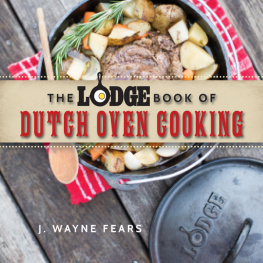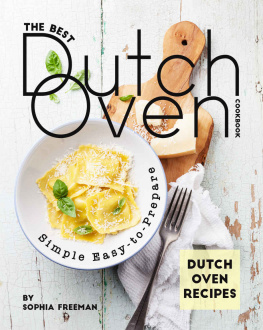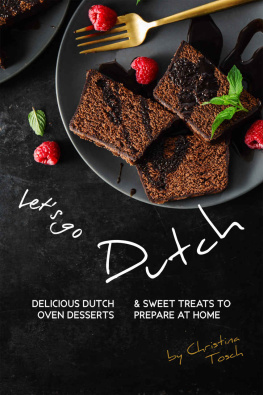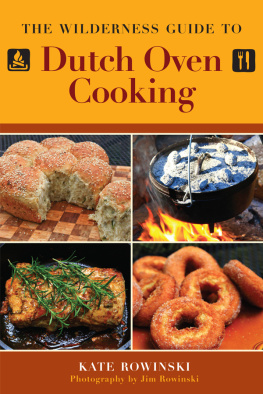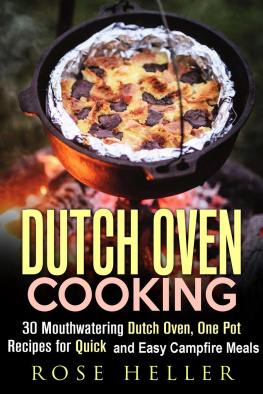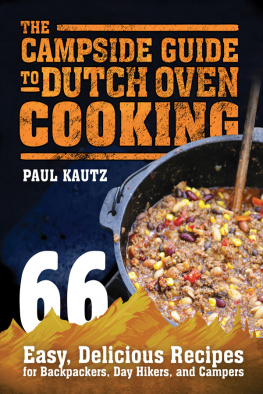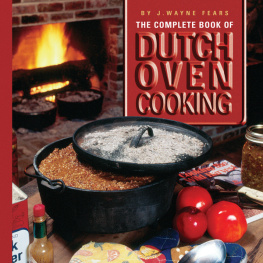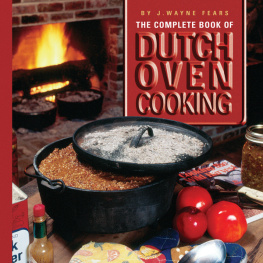Copyright 2017 by J. Wayne Fears
All rights reserved. No part of this book may be reproduced in any manner without the express written consent of the publisher, except in the case of brief excerpts in critical reviews or articles. All inquiries should be addressed to Skyhorse Publishing, 307 West 36th Street, 11th Floor, New York, NY 10018.
Skyhorse Publishing books may be purchased in bulk at special discounts for sales promotion, corporate gifts, fund-raising, or educational purposes. Special editions can also be created to specifications. For details, contact the Special Sales Department, Skyhorse Publishing, 307 West 36th Street, 11th Floor, New York, NY 10018 or .
Skyhorse and Skyhorse Publishing are registered trademarks of Skyhorse Publishing, Inc., a Delaware corporation.
Visit our website at www.skyhorsepublishing.com.
10 9 8 7 6 5 4 3 2 1
Library of Congress Cataloging-in-Publication Data is available on file.
Cover design by Jane Sheppard
Cover photo credit: Abigail Gehring
Print ISBN: 978-1-63450-680-9
Ebook ISBN: 978-1-63450-860-5
Printed in China
To Sofee
She brings sunshine to every day, every situation.

CONTENTS


The magic cooking pot that can do it all is the Dutch Oven.
INTRODUCTION
I f you saw an Internet or TV commercial advertising one cooking pot that would bake bread, steam vegetables, boil shrimp, fry eggs, stew wild game, and broil meats, chances are you might be interested. But what if the commercial went on to say that this nonstick pot could be used to cook a meal on your home stove, in your great room fireplace, on the patio, in a campfire at a state park, or on family camping trips? Plus, its guaranteed to last through several generations of use. If you saw this commercial, your interest would probably be piqued and you would want to know a lot more about this magic pot.
THIS MAGIC POT IS THE DUTCH OVEN
There are a lot of different designs of cooking pots called Dutch Ovens. Some are designed for use with modern stoves. Others are cast-iron pots with long legs made famous by cooks on African safaris. (The real name for these pots is potjie and it dates back to the 1500s.) Yet others are cast iron pots with rounded bottoms designed to hang over open fires. And there are flat-bottomed cast-iron pots designed to sit on stoves or grills. These are often called kitchen Dutch Ovens.
Most outdoor cooks agree that the camp Dutch Oven is made from heavy cast iron and has a flat bottom that sits on three short legs protruding about 2 inches. It has a strong wire bail. The lid is made of the same heavy cast iron and has a small loop handle in the center. The rim of the lid is flanged so that hot coals will stay on the lid while cooking. Most people call these ovens camp Dutch Ovens to distinguish them from other Dutch Ovens. For the purpose of this book, these are the Dutch Ovens we will be talking about.
The Dutch Oven has been piquing cooks interest for many centuries. It has been used in North America since the first settlers explored the Atlantic seaboard. Today, twenty-first-century cooks are finding the old-fashioned Dutch Oven just as much fun and just as valuable as the colonial cooks who depended on the pots to cook all their meals. While we dont have to stoop over a fireplace full of hot coals to cook a meal, cooks around the world are discovering the joy and good taste that comes with cooking in a Dutch Oven. Whether they are cooking for a party on their patio, cooking on a camping trip, or cooking in an emergency when the utilities are not working, the Dutch Oven produces great tasting food with a small amount of effort. Its use is also a fun family activity.
The Internet offers lots of Dutch Oven cooking advice and recipessome good, some bad. Dutch Oven cook-offs have become popular gatherings for Dutch Oven fans and tourists alike. Dutch Oven enthusiasts have formed their own organization, the International Dutch Oven Society, to be a clearinghouse for Dutch Oven information and to foster interest in Dutch Oven cooking. For many people, Dutch Oven cooking has become part of their recreational pursuits, for othersguides, cowboys, outfitters, back-to-the-landers, and people living in remote placesit is simply the way they cook hearty, wholesome meals daily. For preppers, this is a skill they learn and practice in the event we are thrown back to the 1700s by some horrible event. The camp Dutch Oven serves all well.

A lot of pots, as shown, are called Dutch Ovens, but most Dutch Oven cooks consider the middle one the only real camp Dutch Oven.
DONT BE INTIMIDATED BY THE LEARNING PROCESS
It does take a little experience to learn to care for and successfully cook with Dutch Ovens, but once you get it down, it can be one of the most fun cooking experiences you can have. In fact, it is the ever-expanding learning process and caring for their cookware that most Dutch Oven cooks find the most interesting. Spend time around a group of experienced Dutch Oven cooks and you will hear a lot of conversation about seasoning techniques, the best coals to use, cooking in the wind, and always great new recipes. So dont let the learning process scare you away from what may be a lifetime of fun and exciting eating. For many, it is a hobby, and for a few it almost becomes a lifestyle.

Cow camp cooks, hunting guides, and many others use Dutch Ovens as part of their daily routines.

New Dutch Ovens on their way to being packaged for shipping.
HOW A QUALITY CAST IRON DUTCH OVEN IS MADE
CHAPTER ONE
A ccording to Bob Kellermann at Lodge Manufacturing Company, the process for making cast iron hasnt really changed in six hundred years. It is the equipment, production speed, and quality of the final product that are enhanced through technology. Where there were once coke-fired cupolas to bring the iron to its molten state, now there is electric induction melting. It offers greater quality control and is significantly cleaner. In the past, each Dutch Oven was molded and poured by hand.
Today, automatic molding machines do it all. They are faster and yield more consistent product quality. Bob told me these facts when I visited the Lodge foundry in South Pittsburg, Tennessee, to see for myself how quality Dutch Ovens were made.
Many serious Dutch Oven cooks I have been around dream of a trip to Lodge to see how Dutch Ovens are made. I know of one Texas championship winning chuck-wagon cook who took his wife on a vacation to Tennessee just so they could visit the Dutch Oven manufacturing company.
While I was working on this book, Bob invited me to visit Lodge and go onto the foundry floor to watch Dutch Ovens being made. The trip gave me a whole new respect for quality Dutch Ovens, and I still wonder why they dont cost several hundred dollars apiece.

